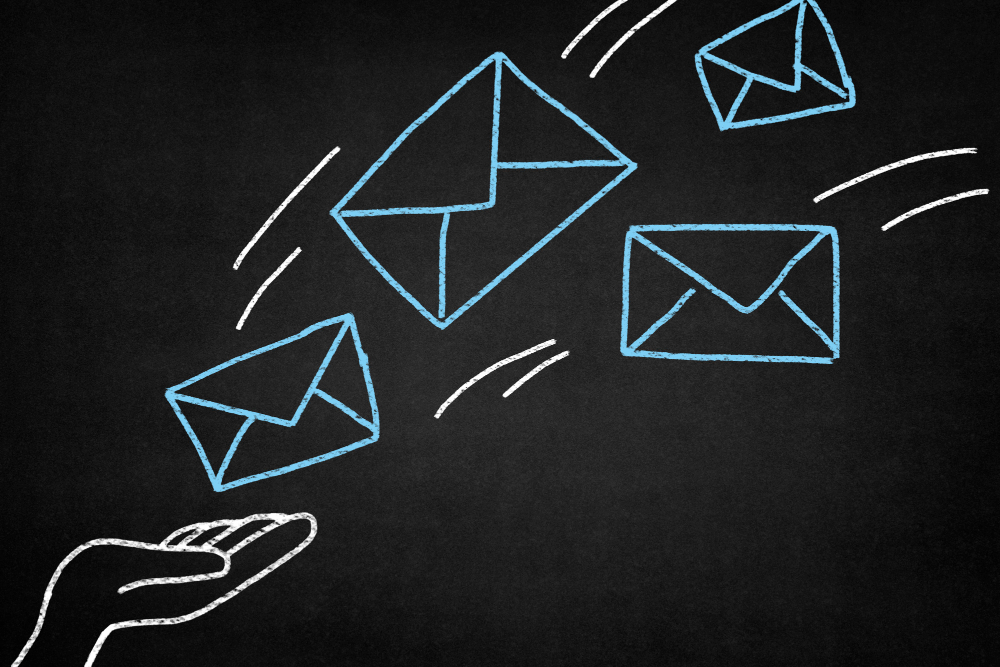Email marketing has something of a mixed reputation. On the one hand, marketers tout its ability to connect with audiences, promote deals & products, and turn favorable ROIs.
But on the other, we’ve all seen that horrible dumpster fire we call a spam folder, often filled to the brim with clickbait, phishing schemes, and your run-of-the-mill rubbish and superfluous nonsense.
Thus, we get a mixed reputation.
But clearly, email marketing must provide some value to businesses. The question becomes, who does it benefit the most? What businesses should pursue email marketing?
So in this post, we’ll run through what email marketing is, what it’s good at achieving, what it’s not, who should implement it & who should steer clear.
Email marketing… what is it?
Email marketing is a form of direct marketing in which businesses send commercial messages via email.
Typically email marketing involves sending advertisements for specific products or promotions.
However, it is also used to foster brand awareness, trust, and loyalty. This can be in the form of announcements or newsletters, re-engagement emails, and even more personalized emails such as birthday messages.
Email marketing campaigns are best run through dedicated marketing clients and applications since free-to-use email service providers like Gmail and Outlook don’t support mass emails.
Popular platforms such as MailChimp, Sendinblue, and Hubspot allow businesses to create email templates, schedule content calendars, and upload huge contact lists.
This is important because email campaigns tend to have low open rates and even lower click-through rates, meaning large mailing lists are a necessity for most campaigns.
Businesses can compile contact lists from many sources including their own customer database, opt-in subscriptions & newsletter sign-ups on their website, and purchasing contact lists from customer databases. However, these paid contact lists tend to be much lower quality and less likely to convert than recipients who opt in.
Nevertheless, email campaigns have the potential to deliver some of the best ROIs in marketing. Let’s take a look at what they’re good at achieving and who stands to benefit most.
What’s Good About Email Marketing?
Inform About New Products / Sales / Specials / Promos
Email marketing campaigns are fantastic at promoting or highlighting products and services. From new product launches to sales promotions, email allows for a broad, but targeted and personalized reach. This makes it great for eCommerce, retail and high-volume product sales, travel & hospitality services, restaurants, and more.
Re-engagement & Cart Abandonment
Email is often a great way to re-engage inactive customers. Whether it’s a subscriber who made a purchase years ago or someone who abandoned their shopping cart yesterday, email campaigns are often used to reignite interest in potential customers.
This is especially the case for eCommerce platforms that wish to follow up with users who left the website without purchasing items in their online cart.
Brand Awareness, Trust, and Loyalty
Email allows businesses to keep in touch with past customers, subscribers, and leads, exposing them to their brand and creating awareness. When businesses use email to build brand awareness and trust, it’s often in concert with content marketing on blog and social media channels.
Not all businesses depend as heavily on repeat customers. But for those that do, email is one of the best ways to maintain engagement between purchases and build brand trust and loyalty.
Lead Nurturing
Businesses with a long sales cycle can leverage email to nurture leads at every step of the process. Use email to communicate expert insights on your products or industry with newsletters or whitepapers (again, in concert with content marketing), gauge interest with responsive drip campaigns, and close on more prospects.
Cost-Effectively Reach Audience
Start up costs for email marketing are rock bottom. Many platforms offer their bottom tier plans for free. This enables businesses that are strapped for cash to get their foot in the door and establish marketing channels for no cost at all.
However, even the more expensive plans are relatively cheap. High quality plans might run for several hundred dollars per month, allowing businesses the freedom to experiment and optimize their marketing schemes and email templates.
What’s NOT Good About Email Marketing
Email is a Numbers Game i.e. You Need a Large Audience
Given low open rates and even lower click-through rates, email marketing is a numbers game. If you’re a local business providing, for example, B2B or home services, your target market might simply be too small for an email campaign to make sense.
Low-Quality Lists
Compiling high-quality lists of opt-in users can take time. And for websites with relatively low traffic or those looking to expand their audience, that means leveraging paid contact lists from customer databases which tend
International Regulations Can Make Things Tough
International regulations on mass email marketing differ significantly between countries. If your business is active in European or overseas markets, different rule sets may require separate campaigns, designs, and strategies.
Consistency is Key
Successful email marketing campaigns require consistent optimization and content updates. It is NOT a set-it-and-forget-it strategy. Although it provides a low cost barrier to entry, it requires dedicated oversight, whether by your in-house marketing team or an agency. This has the potential to increase costs.
Is Email Marketing Right for You?
Email marketing is rarely implemented on its own. Often, it is used in conjunction with content marketing, SEO, or PPC advertising. If you’re considering implementing email marketing within your broader marketing efforts, contact Fanatically Digital to learn how we can help your business.

Leave a Reply